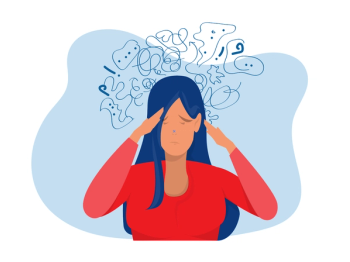
Disability as the Next Step in DEI Explored at Annual Meeting
Speakers at the APA Annual Meeting share insights regarding to disability, both in patients and in clinicians.
As we consider diversity and inclusivity, it is important to think about disabilities, shared Donald Egan, MD, MPH, and Jessica Williams, MD, at the 2024 American Psychiatric Association Annual Meeting in New York City.
Understanding “Disability”
To put the importance of the topic in perspective, Egan, who is the vice chair of the American Psychiatric Association Diversity Leadership Fellowship and PGY-3 University of Texas Southwestern, explained approximately 6 in 10 adults in the United States have a chronic disease, and 4 in 10 have 2 or more. Additionally, 27% of US adults have reported they have a disability across a spectrum of areas:
- 12.8% cognitive disability
- 1 2.1% mobility-oriented disability (eg, walking or climbing stairs)
- 6.1% a hearing disability (eg, deaf or serious difficulty)
- 4.8% vision disability (blind or serious difficulty seeing even with glasses)
Individuals with disabilities tend to experience frequent mental distress (ie, 14 or more mentally unhealthy days in the past 30 days) at a higher level than those that do not have disabilities, they reported. According to data from 2018, 32.9% of adults with disabilities noted they had mental distress. Adults with disabilities are also 2 to 3 times more likely to experience suicidal ideation, suicide planning, and suicide attempts.
Yet, despite the high rates of disability, issues revolving treating patients with a disability are rarely discussed in medical school, said Williams, who is vice-president elect of the APA Diversity Leadership Fellowship and PGY-3 at Washington University St Louis. The speakers polled the audience, who generally agreed that the topic is brought up quickly and equally quickly dismissed.
Practical Considerations
Cultural humility is necessary when working with patients with disabilities, Williams said. The first issue at hand, they explained, is to understand there are a few definitions and models of disability as well as different types of disabilities. The social model considers disability a “problem resulting from complex interaction of social and environmental conditions and a person’s impairment, ”while the medical model considers it a “deficit/pathology residing in a person’s body [that] can be cured or treated,” they explained. It is also important to understand that disability does not equal handicap; “disability refers to a reduction of function or the absence of a particular body part or organ [and] a handicap is viewed as a disadvantage that limits or prevents fulfillment,” they explained.
The types of disability can be diverse, Egan told attendees. He categorized them into physical, sensory, mental, with each category consisting of different issues ranging from function/mobility, invisible illneses (eg, chronic pain, fibromyalgia, etc), neurodiversity (eg, attention-deficit/hyperactivity disorder, dyslexia), intellectual/developmental, and psychiatric.
Williams and Egan also shared tips for culturally competent care for patients with disabilities. “Be curious, supportive, and receptive,” Williams said. Identify any biases you may have and then explore those biases, Egan added. Consider every aspect of the care encounter. Is your office accessible? Can wheelchairs navigate the waiting room, exam/treatment rooms, and bathrooms? Do you allow virtual visits in addition to in-person? Does the intake form allow you to inquire about the disability and what the disability means to the patient?
Then, make sure your screening and treatment plan are culturally competent. Assessments can be sensitive and complicated, Egan explained. Symptoms may present differently, Williams added, and some patients may downplay the disability’s impact. Check for drug-drug interactions. Williams and Egan also stressed the importance of conducting all the screens you would normally; don’t think that just because a patient has Down’s syndrome, for instance, that they are not sexually active. Propose and discuss a treatment plan, making sure patients understand it and can adhere to it. “Remember: patients are experts on themselves,” Williams said.
Disabilities in Clinicians
Disabilities also can be found in clinicians, Williams and Egan noted, but not at the same rate as found in the general population. Despite the Americans With Disabilities Act passing in1990, the 2010 Association of American Medical Colleges Diversity in the Physician Workforce failed to look at and report data on the number of clinicians with disabilities, Williams told attendees. And in 2015, there still was no means to determine and report the number of medical students with disabilities, Williams said.
Both Egan and Williams pointed to the faulty technical standards, which are often difficult to find and focus on sensorimotor skills as opposed to cognitive abilities, with a more functional standard focusing on competency outcomes regardless how a student achieves such. Williams disclosed to the group that she identifies as deaf and hard of hearing, and Egan shared he has cerebral palsy. They detailed their struggles in negotiating accommodations throughout their medical education.
Concluding Thoughts
Egan and Williams pointed to a bidirectional relationship that needs to be considered to improve cultural competence for patients and opportunities for aspiring clinicians. By increasing the ability diversity, there are increased opportunities to better understand and support patients. If curricula on disability increases, the perspective and flexibility of clinicians increases, which may also lead to increased number of students with disabilities admitted to medical school.
Stay tuned to PsychiatricTimes.com for more insights and clinical pearls from the 2024 APA Annual Meeting.
Newsletter
Receive trusted psychiatric news, expert analysis, and clinical insights — subscribe today to support your practice and your patients.

















